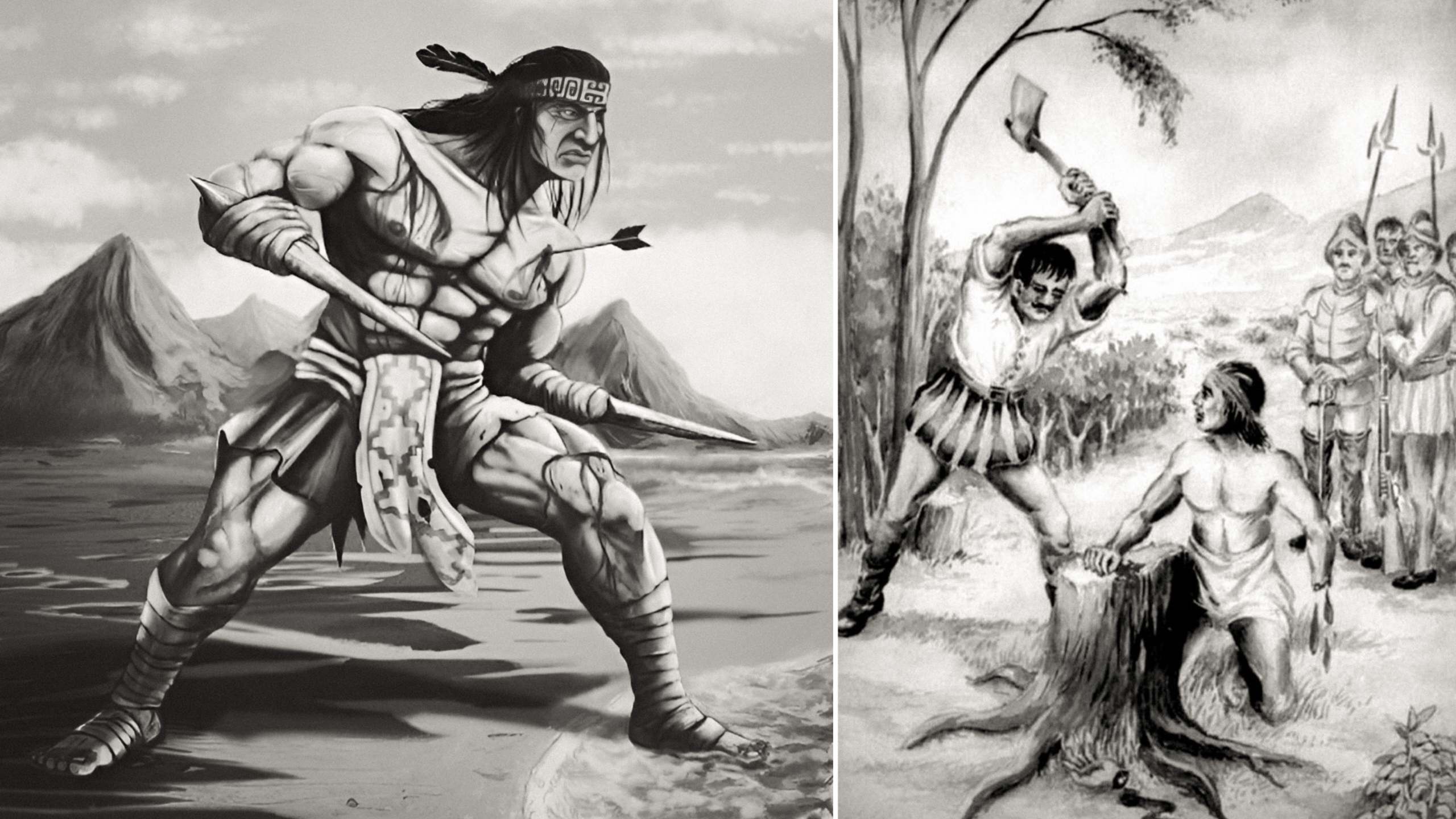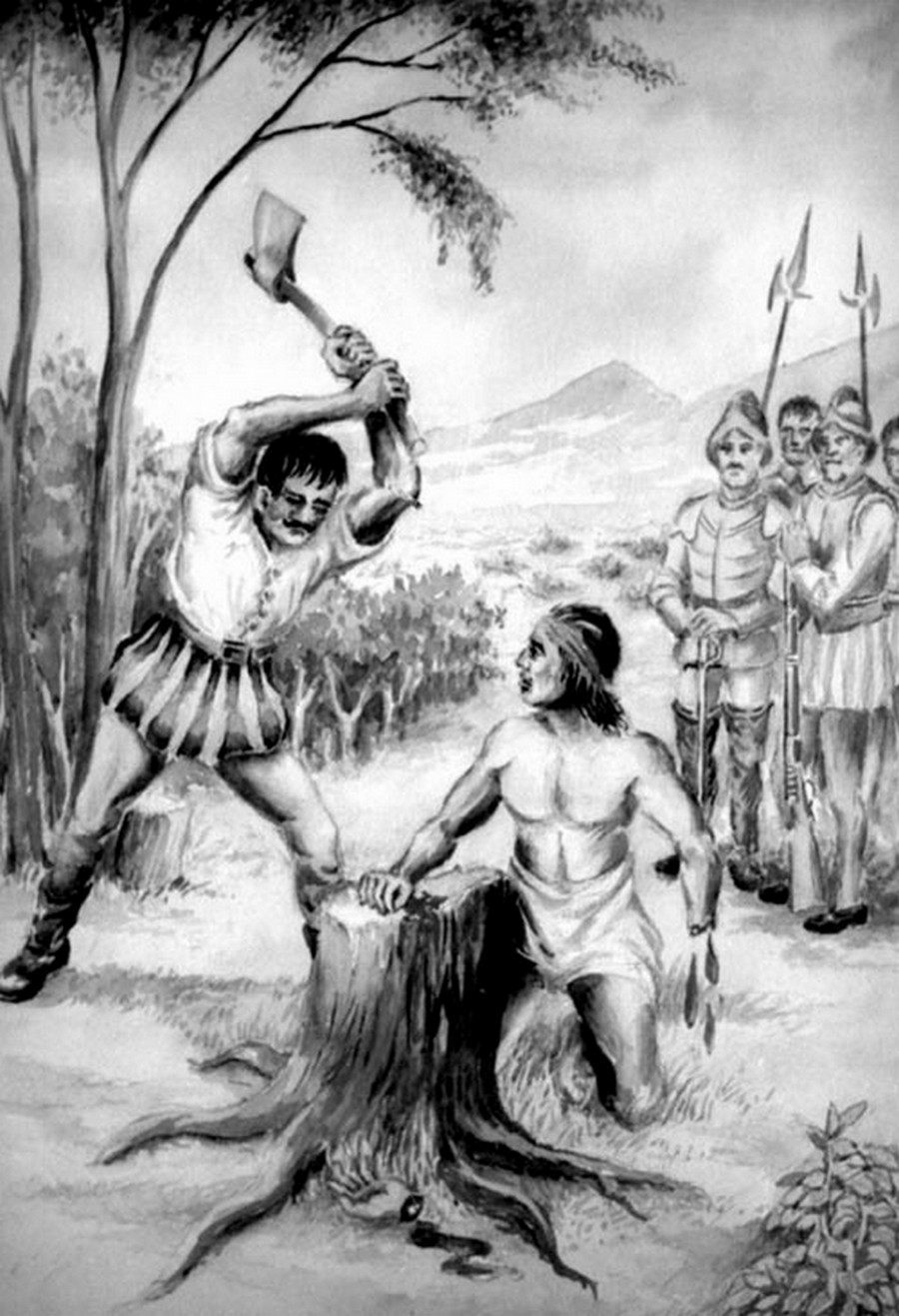Galvarino was a great Mapuche warrior who attached blades to his severed arms in the Battle of Millarapue; showing infinite courage, he fought against the powerful troops of Spain.

This iconic story took place in history during the Arauco War, which was a long-running confrontment between colonial Spaniards and the Mapuche people. The confrontment lasted from 1536 to 1810, and mostly fought in the Araucanía Region of Chile.
In the early phase of the war, Caupolican, a great war leader of the Mapuche people, had led his people to fight against the Spanish Conquistadors who invaded the whole territory (now in Chile) during the 16th century.
At that time, there was another famed Mapuche warrior named Galvarino, who took a significant role during the early part of the Arauco War. His brave story initiated from the Battle of Lagunillas, where he fought against the Spanish governor García Hurtado de Mendoza and was taken as the prisoner along with 150 others Mapuche soldiers on November 8, 1557.
The punishment for insurrection was humiliation in the form of amputation of the right hand and/or nose for some of the prisoners. Galvarino and some other Mapuche soldiers, who were particularly more aggressive, were subjected to the amputation of both hands. Afterwards, they were freed as a lesson and a cautionary tale for the rest of the Mapuche people.

After returning to the Mapuche, Galvarino appeared before their war leader Caupolicán and the council of war, showing them his mutilated hands he cried out for justice. He sought a greater rising of the Mapuche against the Spanish invaders like Lautaro who, in December 1553, led the Mapuche warriors into a series of victories against the mighty Spanish force in a previous war known as the Battle of Tucapel; where the Spanish conquistador and the first royal governor of Chile, Pedro de Valdivia was killed.
For Galvarino’s bravery and gallantry, he was named by the council to command a squadron. Without waiting for his wounds to be healed, he was again in the war from the very next day with knives fastened on both stubs of his mutilated arms. He fought next to Caupolicán in the following campaign until the Battle of Millarapue, which was going to take place within the next few days, on November 30, 1557. There Galvarino’s squadron would fight against the troops of Governor Mendoza. Surprisingly, with the wounded hands, Galvarino was able to strike down Eric Demand who was the number two in Mendoza’s command.
However, the Spanish troops broke Galvarino’s division after spending some hard hours in combat and won the battle killing 3,000 Mapuche warriors, capturing more than 800 including Galvarino. Mendoza ordered him to be executed on that day by being thrown to the aggressive dogs. Although Alonso de Ercilla has explained in his book of ‘La Araucana’ that the real death of Galvarino was by hanging.
It is very clear that Galvarino was defeated because of his physical misery and the enemy’s better war strategy and advanced weaponry systems. But, in reality, Mendoza was defeated by the tremendous courage of Galvarino, perhaps Mendoza realized it too.




